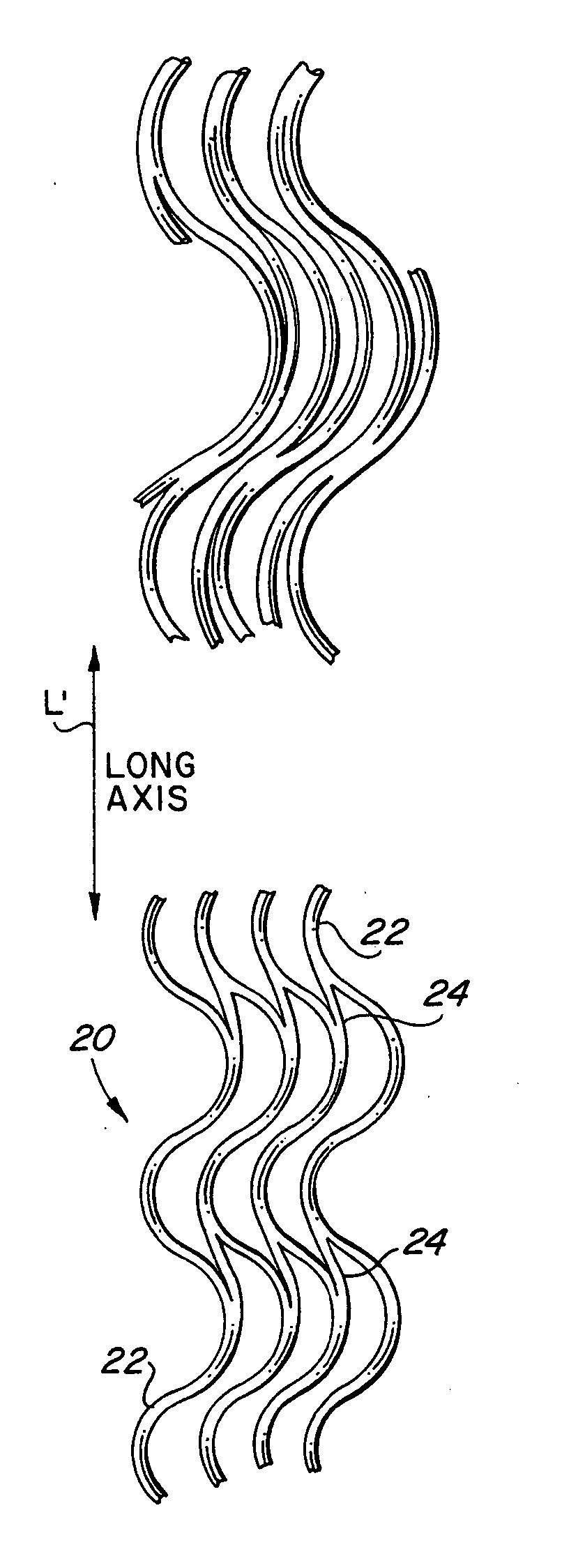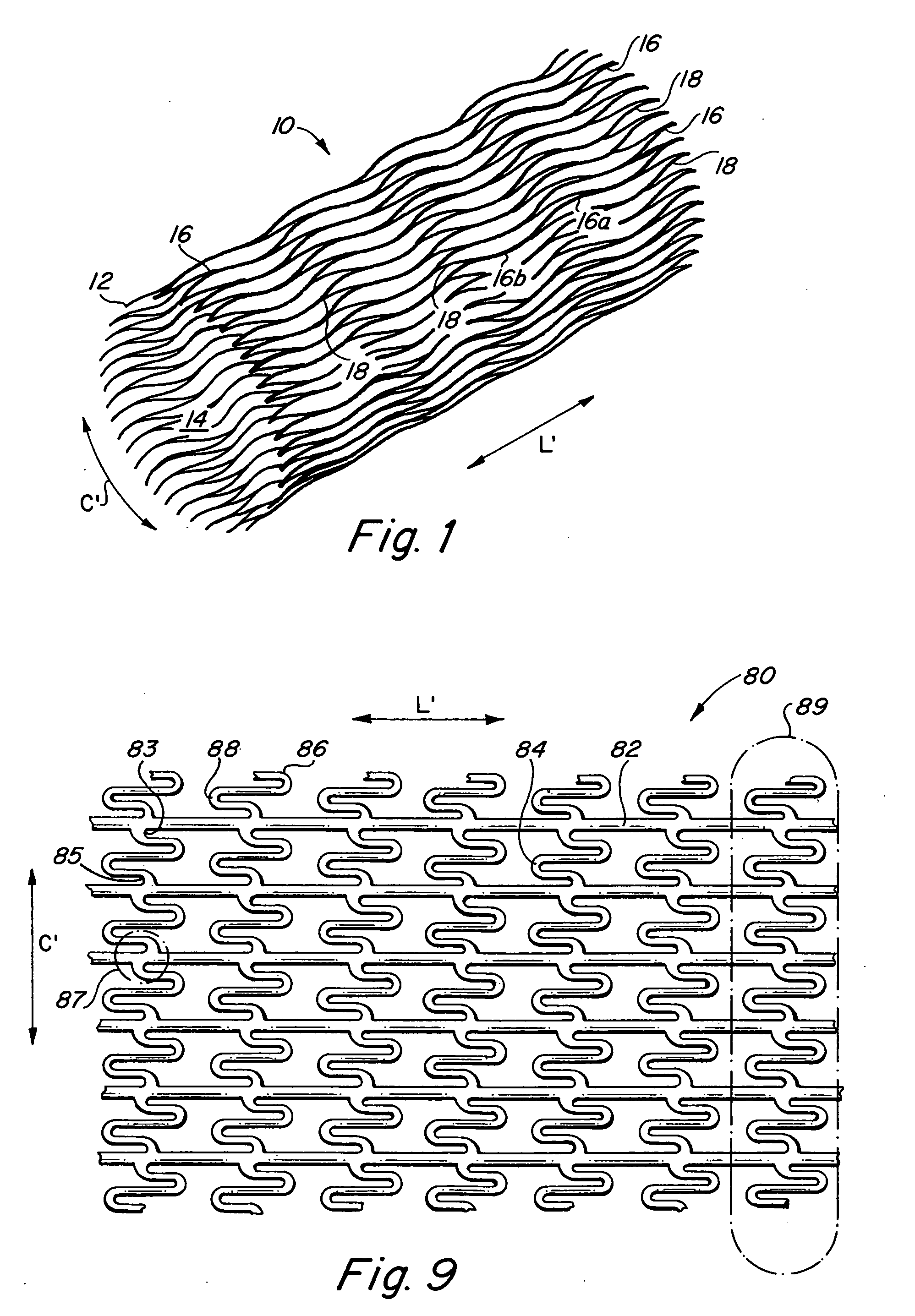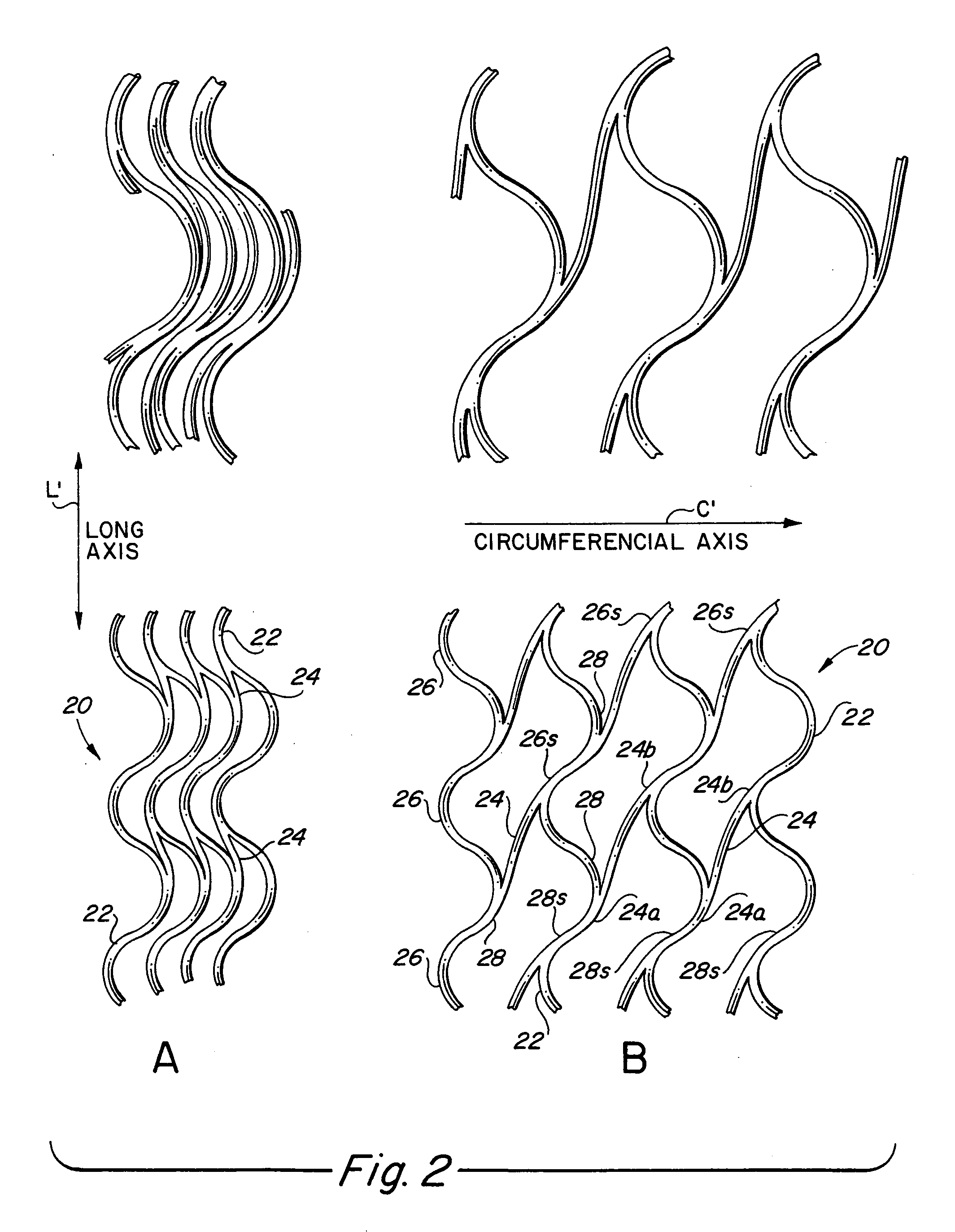Endoluminal stent, self-supporting endoluminal graft and methods of making same
- Summary
- Abstract
- Description
- Claims
- Application Information
AI Technical Summary
Benefits of technology
Problems solved by technology
Method used
Image
Examples
Embodiment Construction
[0040] In accordance with the present invention there is provided several preferred embodiments. In each of the preferred embodiments of the present invention, the general configuration of the inventive endoluminal stent is identical. With particular reference to FIG. 1, the inventive endoluminal stent 10 consists generally of a tubular cylindrical element having a stent wall 12 that defines a central lumen 14 of the stent. A plurality of first structural elements 16 are arrayed about the circumferential axis C=of the stent 10 and extend parallel along the longitudinal axis of stent 10. A plurality of second structural elements 18 interconnects adjacent pairs of the plurality of first structural elements 16. Each of the plurality of first structural elements 16 have a generally sinusoidal configuration with a plurality of peaks 16a and a plurality of troughs 16b of each first structural element. As noted above, the plurality of peaks 16a and the plurality of troughs 16b may have eit...
PUM
| Property | Measurement | Unit |
|---|---|---|
| Grain size | aaaaa | aaaaa |
| Length | aaaaa | aaaaa |
| Width | aaaaa | aaaaa |
Abstract
Description
Claims
Application Information
 Login to View More
Login to View More - R&D
- Intellectual Property
- Life Sciences
- Materials
- Tech Scout
- Unparalleled Data Quality
- Higher Quality Content
- 60% Fewer Hallucinations
Browse by: Latest US Patents, China's latest patents, Technical Efficacy Thesaurus, Application Domain, Technology Topic, Popular Technical Reports.
© 2025 PatSnap. All rights reserved.Legal|Privacy policy|Modern Slavery Act Transparency Statement|Sitemap|About US| Contact US: help@patsnap.com



